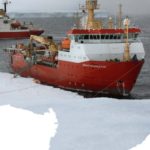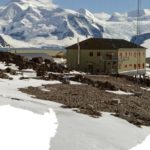Atmospheric nitrogen oxides (NO and NO2) at Dome C, East Antarctica, during the OPALE campaign
17 July, 2015 by Howard Roscoe, Markus Frey
Mixing ratios of the atmospheric nitrogen oxides NO and NO2 were measured as part of the OPALE (Oxidant Production in Antarctic Lands & Export) campaign at Dome C, East Antarctica…










